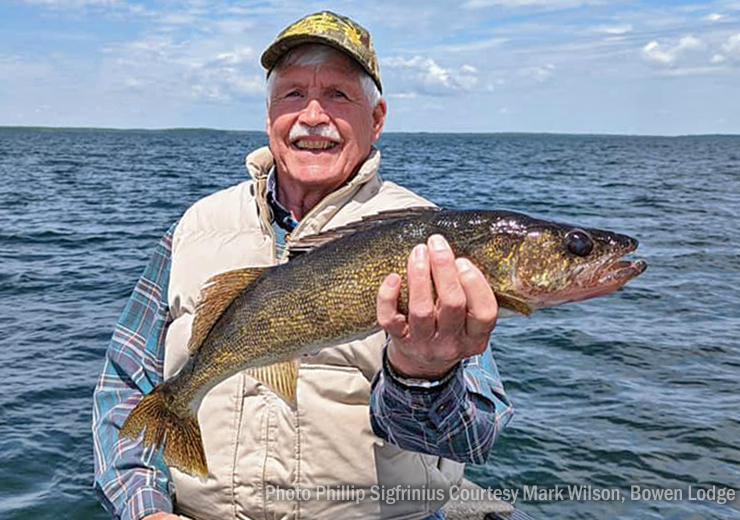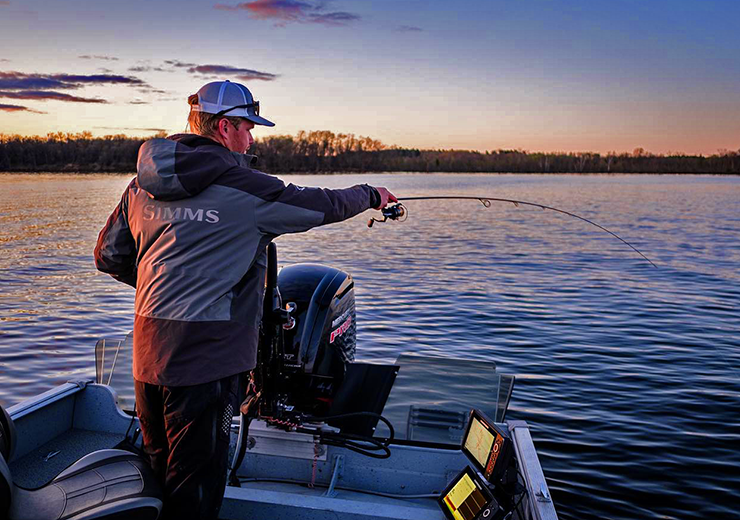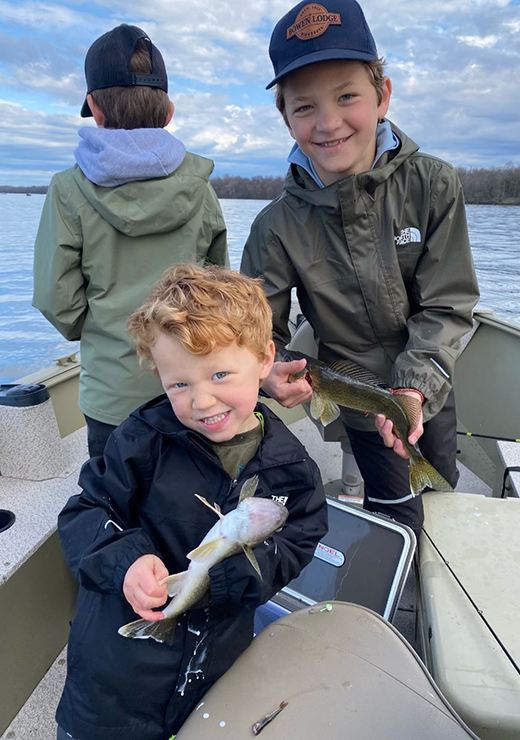Turbulent weather has kept fishing guests “on their toes”, particularly ones who love spending most of their time on the big lake. The pattern, if you want to call it that, has been to squeeze in a few hours of quality fishing time whenever the weather presents an opportunity.
Walleyes, still receiving the lion’s share of attention, are turning up in a wider variety of locations. There are still decent numbers of fish on mid-depth flats near Third River, Tamarack Bay and at the west side of Winnie. Key depths range from 10 to 14 feet on the flats where you’ll find scattered pods of walleyes feeding.
Mid-lake bars and humps are generating some attention mow too. Experienced anglers recognize walleye migrations following typical seasonal trends, starting on bars that connect directly to the shoreline, and then fanning out toward more isolated structures.
Key depths vary with weather conditions, sunshine forces fish deep, often found suspended out and away from the breaklines. Clouds, rain and a good chop encourages fish to move up onto the structure, typically holding at the upper edges and occasionally, onto to the tops of the sprawling bars. Fish found “on top”, in the 14-to-18-foot depth range will be active and feeding. Fish found in deeper water, 28 feet and deeper are frequently in a holding pattern, and they may or may not be feeding.
Vegetation, like cabbage beds are producing fish too, but have become increasingly difficult to locate. Some say it’s because of the Rusty Crawfish, an invasive species that decimates vegetation. Whether that is truly the cause of declines in plant life or not, know that when you do locate a good cabbage patch, you’ll likely find fish in it.
Presentations for catching walleyes include slip-floats, Lindy Rigging, jig and minnow, and trolling spinners. Anglers fishing during late evening and after dark, are trolling with crankbaits as well.
Cooler weather, combined with high water conditions are keeping the lake water both clear and relatively cold. Surface temperatures now oscillating between the high 60s and low 70s depending on the conditions of the day. Because the water is so clear, anglers have struggled on sunny days. Even during breezy conditions, anglers faced with sunshine and blue skies are advised to fish the early morning and late evening for better odds of success.
Northern Pike now found roaming the steep edges of mid-lake bars are striking large minnows. Trolling with live bait spinner rigs and suckers in the 6-to-10-inch size range will be productive. So will drift fishing using slip-floats to suspend the large minnows 3 to 4 feet above the bottom. To date, there is no evidence of significant pike activity in shallow water. That said, any premium cabbage bed or rock pile is usually worthy of a few casts using larger spinnerbaits, spoons, or large, shallow diving crankbaits.
Bass and panfish are on the prowl in shallow water. Bluegills have been fanning beds, and some of them are done spawning. Others. Interrupted by turbulent weather, are not finished with spawning. This makes locating them interesting, some are located in stands of bulrushes, others are on patches of gravel and some of them will be located in cabbage or other vegetation.
Casting small “spin-jigs” like a beetle spin or road runner will help locate fish. Once found, your presentation can be fine tuned to match the situation.
Don’t get caught off-guard by the game warden, Cutfoot and Little Cutfoot are part of the “Quality Sunfish Initiative” and have a 5 sunfish limit now. So be sure to keep close tabs on your fish count.
Perch fishing has been spotty. There are schools of nice ones located occasionally, but consistency is moderate at best. Soft bottom areas near deep structure, gravel patches and wild celery are key locations. Locating good food sources is key, but perch are very adaptable, so those sources vary. Insect hatches, particularly midge, will attract them. So will crawfish and larger schools of smaller, minnow size perch in the 1-1/2-to-3-inch range.
Once located, jig and minnow combinations or live bait rigs and minnow combinations will provide consistent action.














